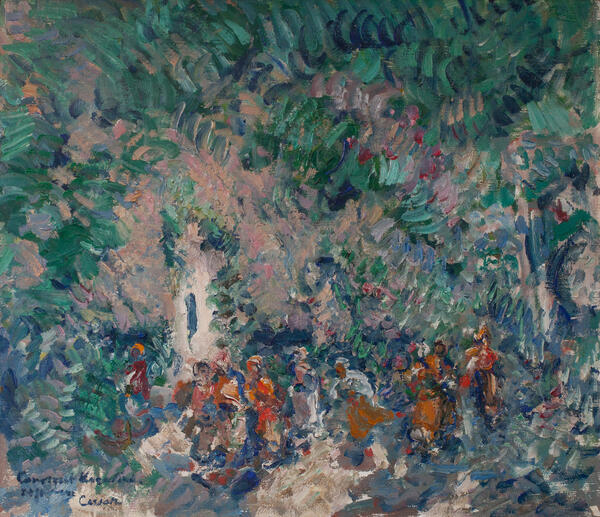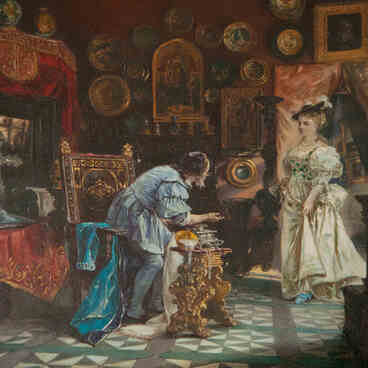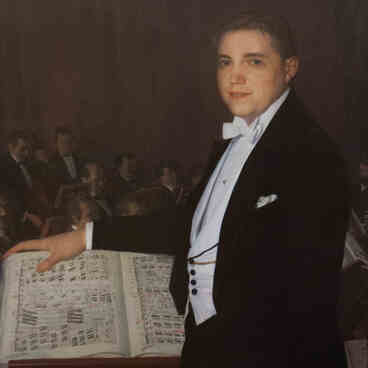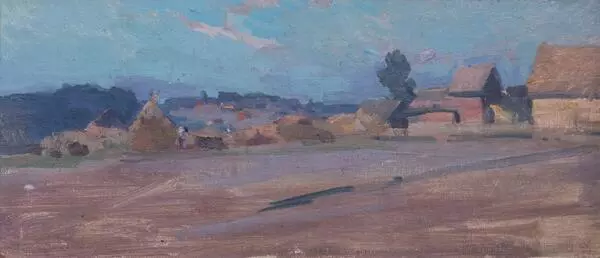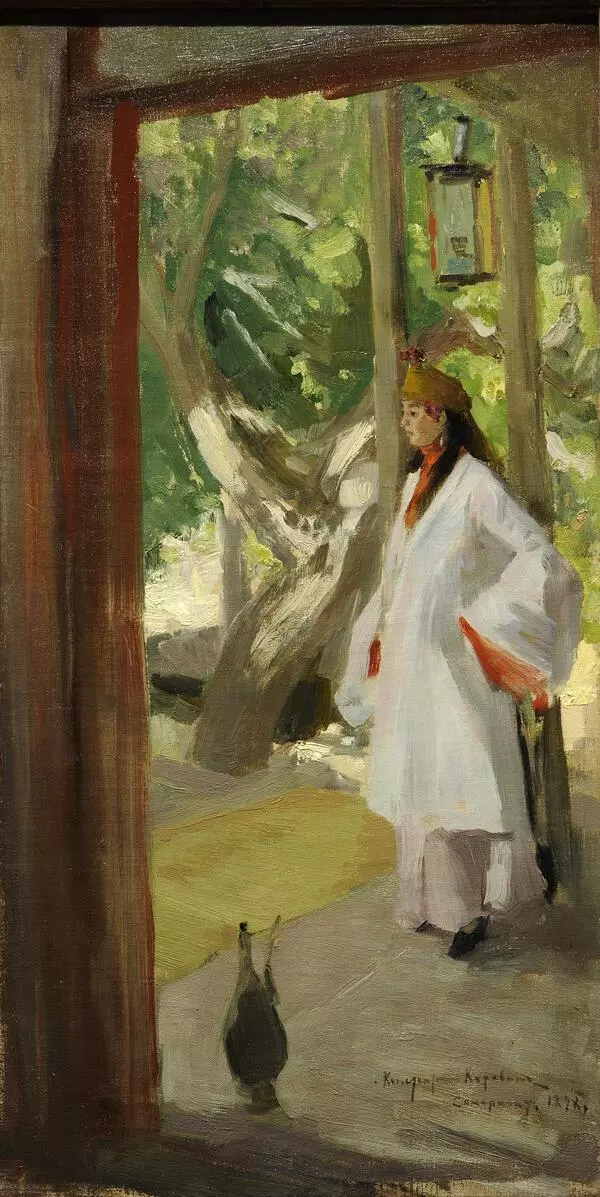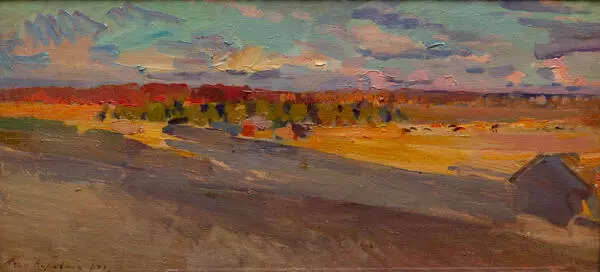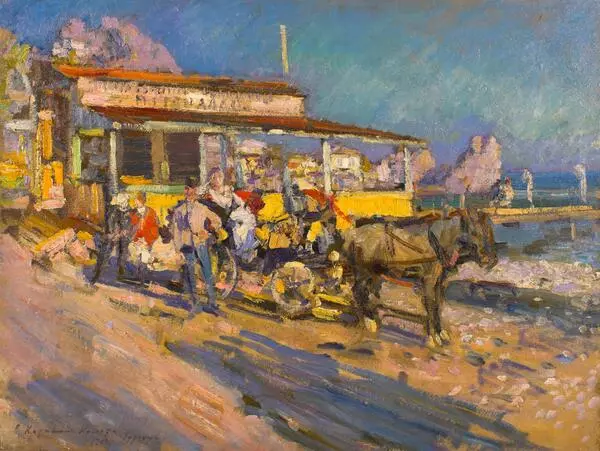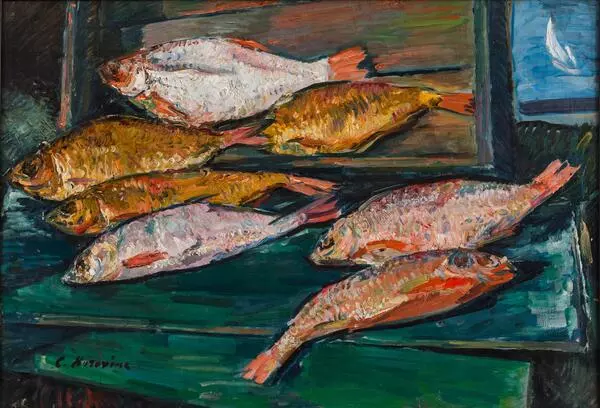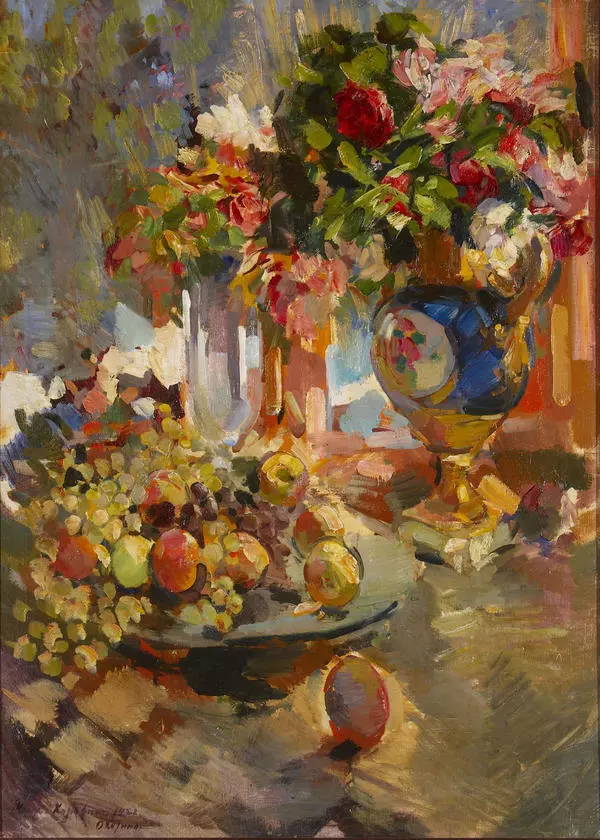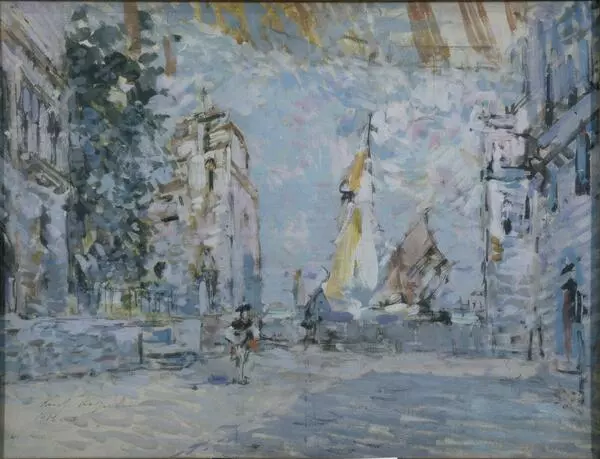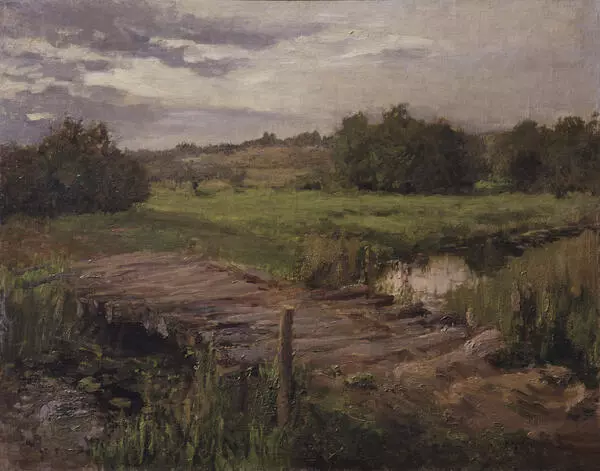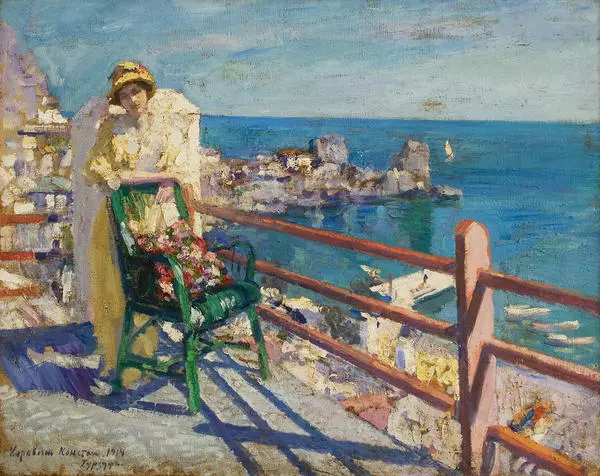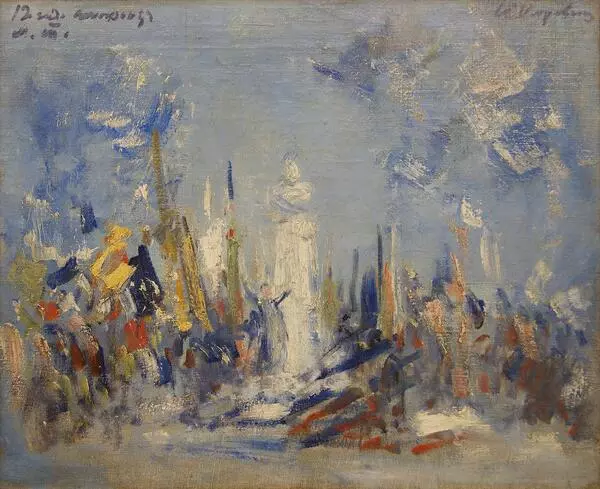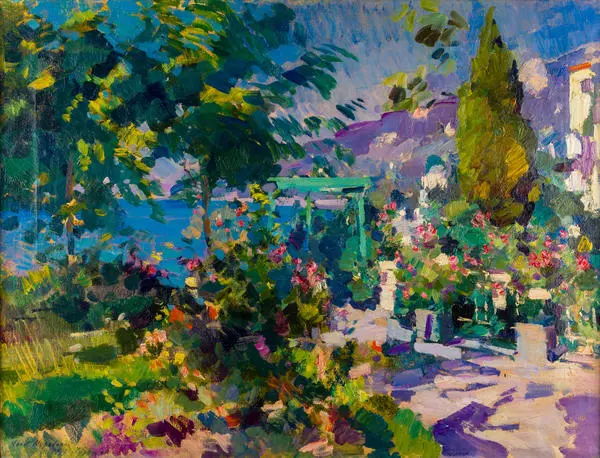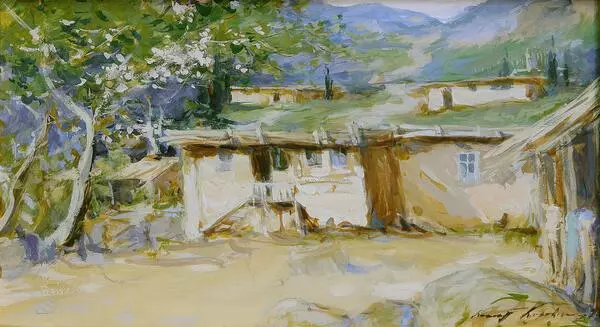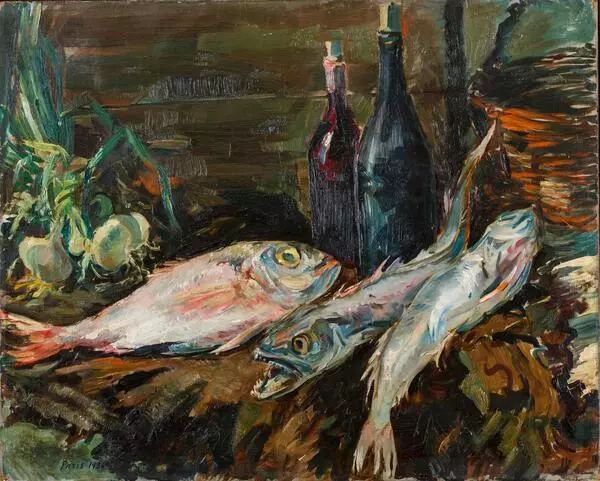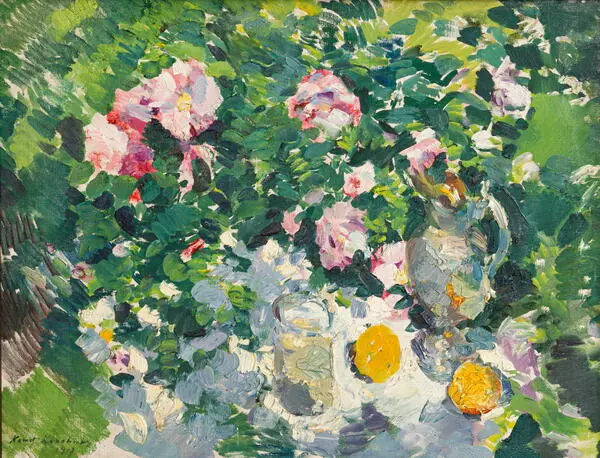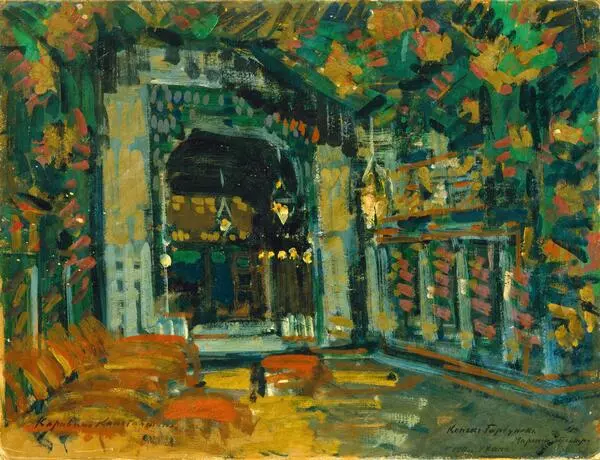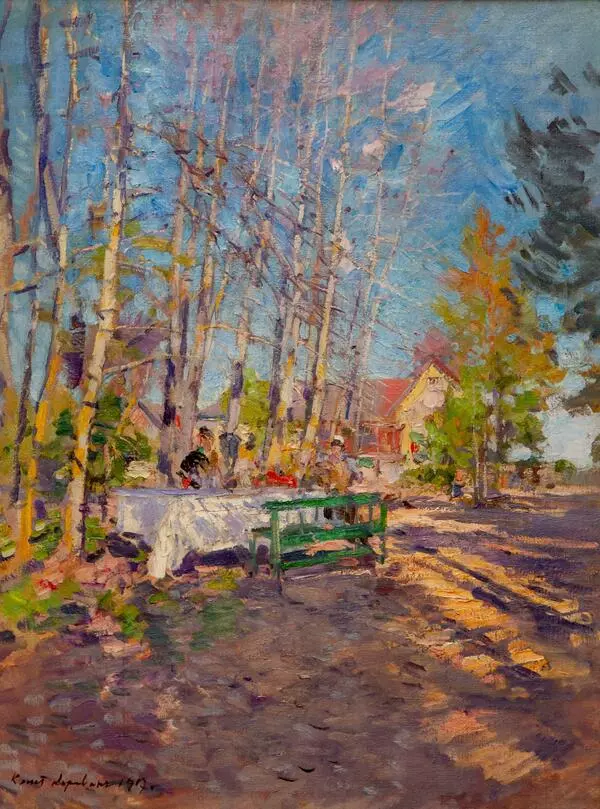The collection of Nikolai Semyonovich Golovanov included 23 works by Konstantin Alekseyevich Korovin. One of them — a set design for the 1st act of the ballet “Le Corsaire” by Adolphe Adam — is displayed in the dining room of the conductor’s apartment museum.
On January 12, 1858, the ballet “Le Corsaire” by Adolphe Adam was staged for the first time in Russia by the choreographer Jules-Joseph Perrot at the Bolshoi Theater in Saint Petersburg. The ballet was loosely based on the poem “The Corsair” by Lord Byron, written in 1814. Before Adam, Byron’s poem had been already adapted by other composers, in particular Giuseppe Verdi, who composed the eponymous opera in 1848. The first known ballet production under the same name took place at the Teatro alla Scala in Milan in 1826. It was staged by the Italian choreographer Giovanni Galzerani. Sadly, none of those ballets have survived to this day. The adventurous and colorful ballet by the composer Adam, which has been preserved and is still staged around the world, tells the audience about the life of corsairs, presenting an exotic plot that unfolds like a motley, multicolored oriental carpet, and impresses with the unbridled emotions, a wealth of dramatic situations, and repeated alternation of danger and escape. Adam went down in history as one of the founders of romantic ballet. His work, created in the mid-19th century, bears a vivid imprint of the aesthetics of Romanticism.
In the review of the ballet’s premiere, Korovin was dubbed the main character of the production, and the scenery he created was perceived as “a truly extravagant splendor of colors, the whole symphonies of them that please and bewitch the eye.” Nikolai Semyonovich Golovanov knew Korovin personally, and through his friend Boris Krasin, who visited the artist’s estate in Itlar, Vladimir Governorate, he learned a lot of interesting facts, such as his habits and practical jokes. For example, the artist was passionate about fishing and could talk about fish for three days in a row. The contemporary musicians said repeatedly that Golovanov’s works and Korovin’s canvases “sounded” similar. The words said about the artist — “A truly great and bright talent” — can be applied to the conductor just as well.
On January 12, 1858, the ballet “Le Corsaire” by Adolphe Adam was staged for the first time in Russia by the choreographer Jules-Joseph Perrot at the Bolshoi Theater in Saint Petersburg. The ballet was loosely based on the poem “The Corsair” by Lord Byron, written in 1814. Before Adam, Byron’s poem had been already adapted by other composers, in particular Giuseppe Verdi, who composed the eponymous opera in 1848. The first known ballet production under the same name took place at the Teatro alla Scala in Milan in 1826. It was staged by the Italian choreographer Giovanni Galzerani. Sadly, none of those ballets have survived to this day. The adventurous and colorful ballet by the composer Adam, which has been preserved and is still staged around the world, tells the audience about the life of corsairs, presenting an exotic plot that unfolds like a motley, multicolored oriental carpet, and impresses with the unbridled emotions, a wealth of dramatic situations, and repeated alternation of danger and escape. Adam went down in history as one of the founders of romantic ballet. His work, created in the mid-19th century, bears a vivid imprint of the aesthetics of Romanticism.
In the review of the ballet’s premiere, Korovin was dubbed the main character of the production, and the scenery he created was perceived as “a truly extravagant splendor of colors, the whole symphonies of them that please and bewitch the eye.” Nikolai Semyonovich Golovanov knew Korovin personally, and through his friend Boris Krasin, who visited the artist’s estate in Itlar, Vladimir Governorate, he learned a lot of interesting facts, such as his habits and practical jokes. For example, the artist was passionate about fishing and could talk about fish for three days in a row. The contemporary musicians said repeatedly that Golovanov’s works and Korovin’s canvases “sounded” similar. The words said about the artist — “A truly great and bright talent” — can be applied to the conductor just as well.

